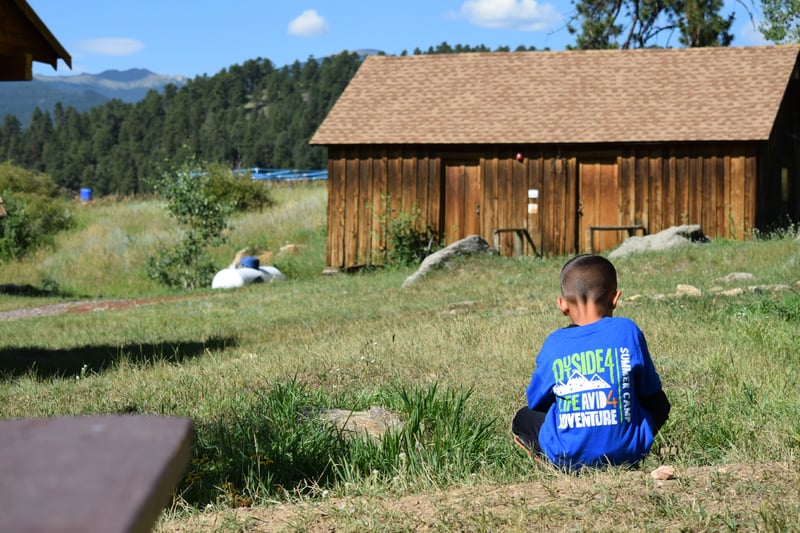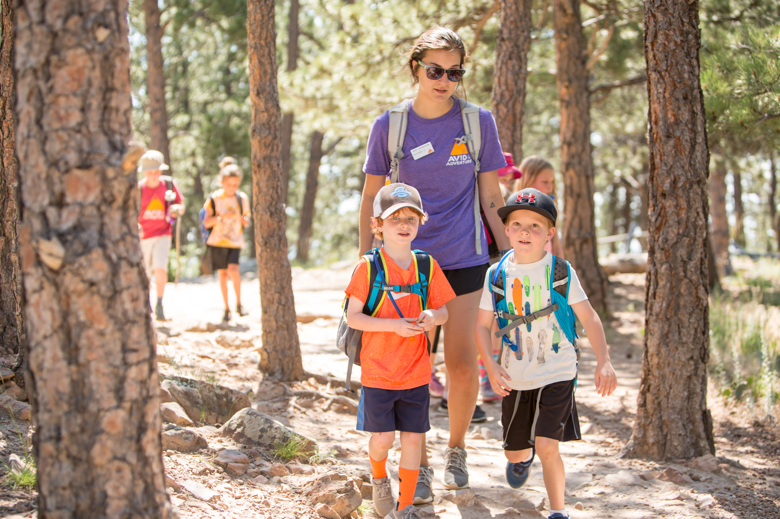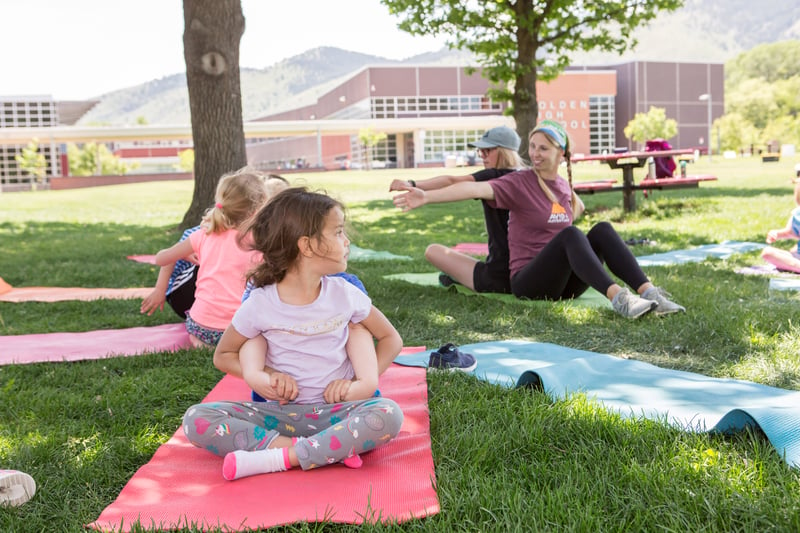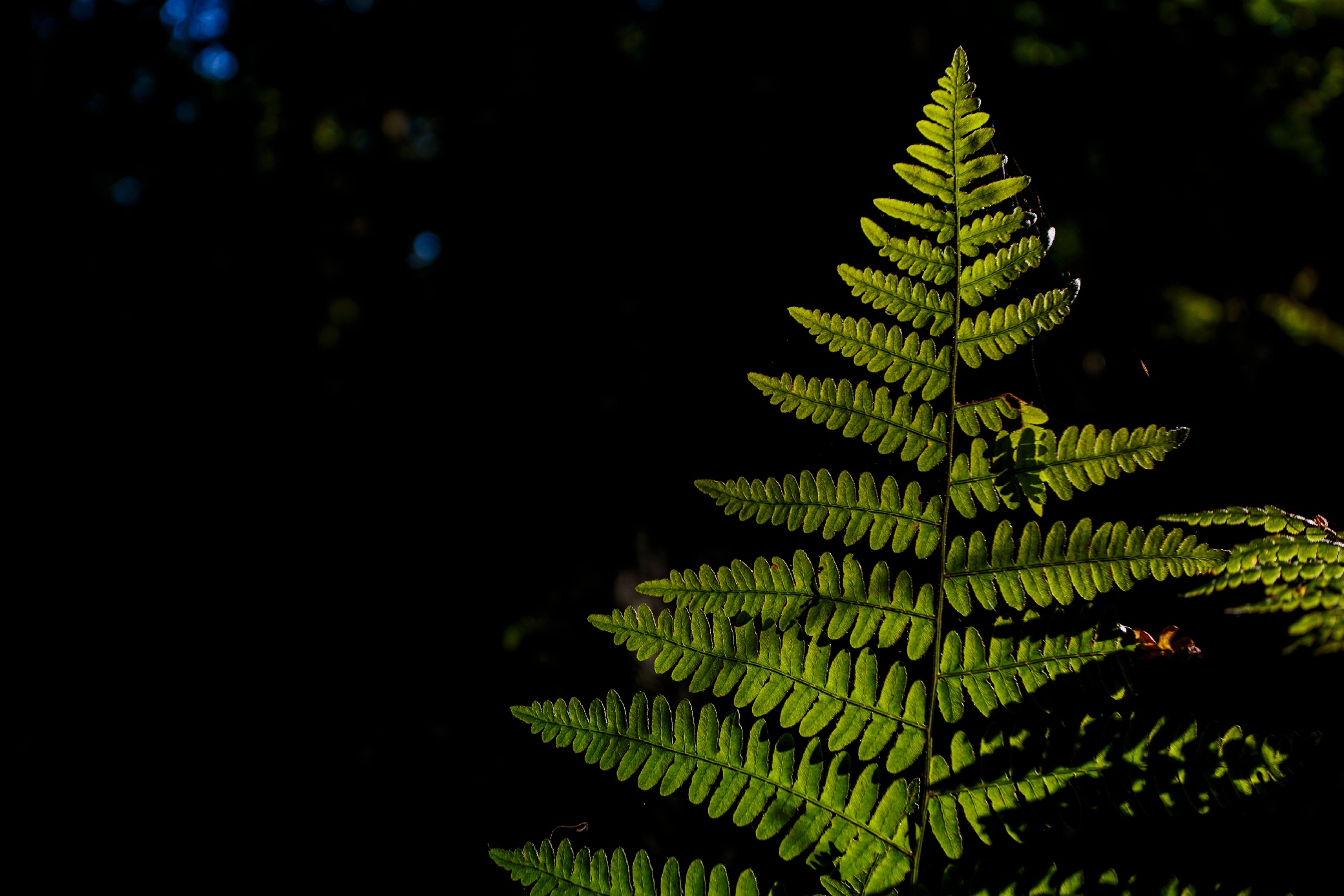Practicing the art of mindfulness in times as anxiety-producing as the ones we're enduring right now may just be the key to thriving, rather than simply surviving. But, before we delve into the specifics of how and why that could be the case, you may find yourself wondering “Wait, Rebecca, what even is mindfulness”. Great question; I’m glad you asked.
What is Mindfulness?
Mindfulness can mean: being ‘present’, observing situations rather than impulsively reacting to them, focusing more on the present moment instead of the past or future, working to pinpoint the source of our emotions. The way that I like to think of it is that if you're cultivating mindfulness, you're creating a better understanding of yourself, thus increasing your ability to effectively respond to stressful situations. No matter how you define it, studies have shown amazing physical, socio-emotional, and cognitive benefits of practicing this art, for all ages.

First, mindfulness activities can actually change the way our brains are wired. Incredible, right?! The more we use certain network connections in our brains, the stronger those connections become. This works to both our advantage, and disadvantage. When we worry, we activate the networks in our amygdalas—the part of our brains responsible for eliciting emotions like fear, anxiety, and aggression—and we end up worrying more.
On the flip side, the more we cultivate awareness, the stronger those networks in our brains become, and the more easily we can experience the calmness and acceptance that comes with mindfulness.
Researchers uncovered some of these benefits by looking at how mindfulness classes in academic settings impacted students. After participating in these classes, children reported feeling less stress, symptoms of anxiety and depression, and an increased ability to focus and control their emotions. This resulted in greater academic success and sense of health and well-being.
Where to Start
Now that we know mindfulness is worth investing some time in, where to start? Here are a few ways to turn mindfulness practices into regular routines. And remember, don’t be intimidated if you're new to this as an adult. Establishing these routines with your children will only make them feel more accessible, and help your kiddos understand that being mindful is a process, rather than something you become an expert in overnight.
Glitter Jar:
-
- Create a glitter jar. Talk to your kids about how the jar is like your body and mind—when the glitter (your thoughts) is swirling, it’s hard to think clearly, until you let the jar relax and settle. Use this analogy to talk about ways to help yourself settle in times of swirling stress, like focusing on your breath as the glitter floats to the bottom of the jar, and thinking of positive, calming thoughts.
Silent Hike:
-
- This is a beloved tradition on Avid4 camp hike days and is a chance for kids to practice being aware of their surroundings. Simply tell your kids that you’re going to walk single file in silence for a prescribed distance or amount of time (typically with a bit of distance between each person). Suggest that they hone in on their senses of smell, sight and sound. When you get to your end point, be sure to share what you all observed and talk about how it felt to be silent.

Rainbow Walk:
-
- This simple activity helps build observational skills and can add a sense of discovery and adventure to an ordinary walk. As you stroll outdoors with your kiddos, starting with one of the colors of the rainbow, point out as many objects of that color as you can, and then move on to the next color. If you want to make this a routine, bring a clipboard and pencil with you as you walk so you can record your findings and discover how they change with different times of the year, day, or area of exploration. This activity can also help spark curiosity, as kids begin to realize that, for example, flowers might be one color at the beginning of the day and then open to reveal another color as they react to the sunlight.
Gratitude Practices:
-
-
Thank You Tree:
- This is a routine I created during my time as a preschool teacher. First, I drew a large tree on the wall with bare branches. Then, at the end of every day, I asked my students what they were grateful for. As they spoke, I wrote their answer on a colorful paper leaf, and they helped stick them on the branches afterwards. As the year went on, our tree became a beautiful, multicolored reminder of our appreciations for each other and the world around us. In times of stress, focusing on positive thoughts can help calm your mind; when such nuggets of positivity are constantly on display they are easier to recall.
-
-
-
Appreciations:
- An Outward Bound tradition is to voice ‘appreciations’ every day before dinner. No one is required to speak, but I never went through a meal without at least two students volunteering words of gratitude. To establish this practice, simply make several moments available before dinner for anyone to say what they appreciated about the day; no further guidelines. It could be a beautiful sunset, a nice comment someone said, a good night’s sleep, a particularly yummy snack—anything goes.
-
-
-
Warm and Fuzzies:
- While working at the Providence Children’s Museum my team of Americorps members maintained a ‘Warm and Fuzzies Box’. Throughout the day anyone was welcome to write a warm and fuzzy—something nice they noticed someone else do, or say, for example—on a small piece of paper and drop it in the box. During our weekly meetings we passed around the box and read the notes aloud to each other. This simple, light-hearted practice helped us appreciate each other and brought to light positive traits we may not have otherwise noticed in each other or even ourselves.
-

Pass the Cup:
-
- This is a fun and easy way for kids to build connections, notice how their actions can affect others, and practice self-control and teamwork. All you need is a cup filled with water. The challenge: pass the cup from one person to another (or around a circle if you have a group) without spilling a drop. If you want to up the ante, fill the cup closer to the brim, or have everyone try it with their eyes closed.
Yoga:
-
- Yoga and mindfulness inherently go hand-in-hand. They both encourage the participant, whatever their age, to tune into their breath and body, and require staying present in the moment. Yoga can help kids cultivate and maintain a sense of calm, and build physical self-awareness. With its unique blend of fun and challenge, yoga can quiet the mind and awaken the muscles which is part of the reason we love incorporating it some of our outdoor Avid4 Adventure camps. Check out our simple and fun 20 minute yoga video and mindfulness exercise for kids below.
Moving Forward
It’s important to remember that just because we are practicing mindfulness, doesn’t mean we’re going to stop experiencing feelings of anxiety, worry, or stress. What it means is that we will build a heightened awareness of what’s causing those feelings, notice when we’re becoming enveloped in them, and recover more quickly by employing strategies that bring about a sense of calm, and self-control. These are powerful, lasting skills for everybody to know and the earlier we can add them to our tool kits, the more happily we can move through the world.
To read about more tools to help improve mental and emotional well-being for kids and adults, click the link below.
Be sure to check out our other fun activities for kids including this nature scavenger hunt, free outdoor apps for families, and these outdoor cooking recipes for kids.
About the Author:
Rebecca held the position of Deckhand and Educator aboard a 100ft historic sailing vessel when she fell in love with outdoor education. She went on to work for Outward Bound where she implemented and developed outdoor middle school science lessons and led sailing expeditions. She spent a summer tweaking Avid4 Adventure's outdoor cooking curriculum as part of her Masters of Science in Environmental Studies program. She's designed and built a nature playscape at an environmental center in OH, helped open an outdoor- and culinary-education-focused preschool in OR, led multi-day sea kayaking excursions in WA and now works in VT, cooking locally-sourced and scratch-made food for the local school's meal system. Drawing on her Avid4 experience, she's also offering an outdoor cooking after school program.





 Login
Login
 Store
Store
 Help Center
Help Center




